Power Consumption & Temperatures
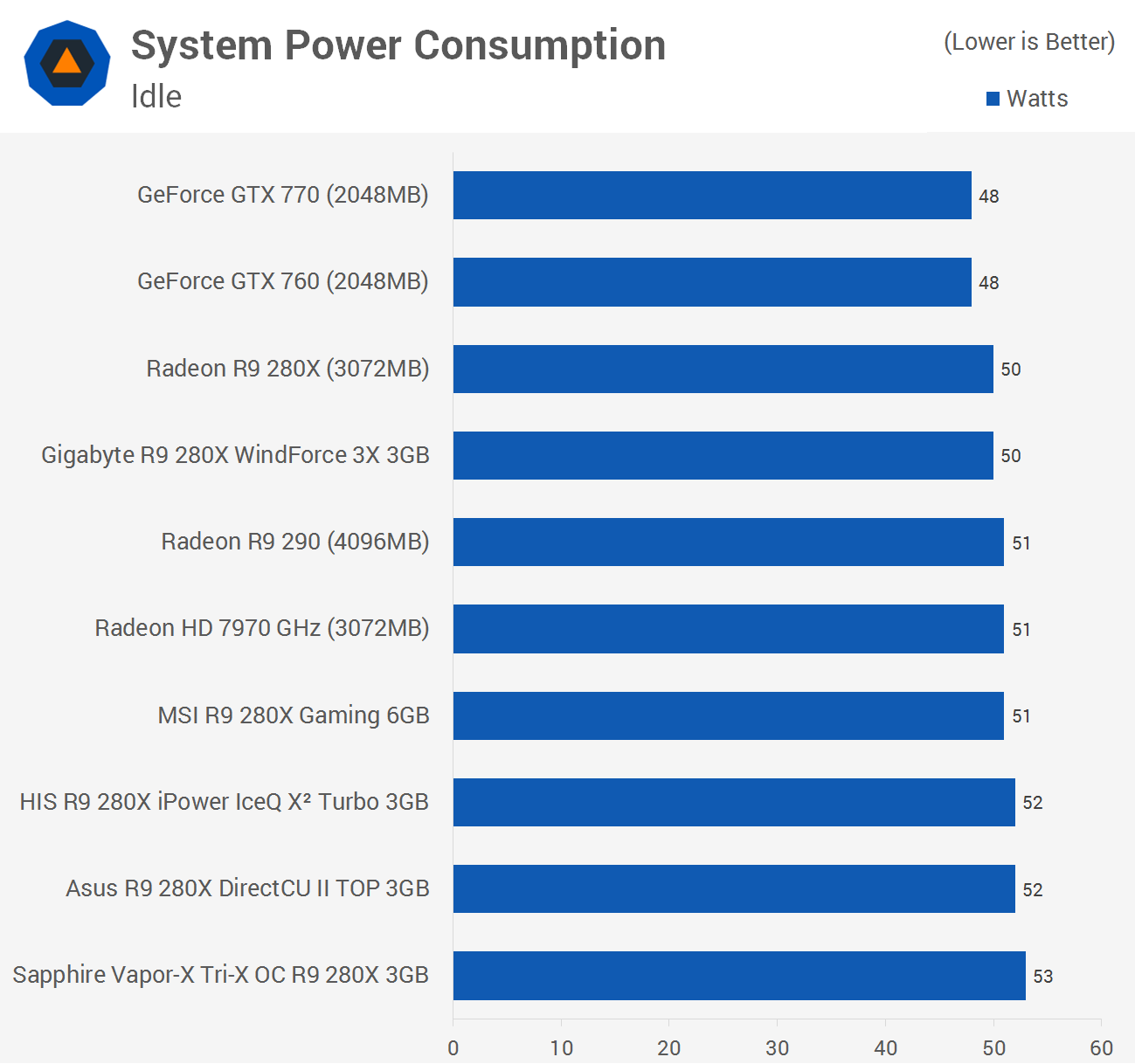
All R9 280X cards allowed for a total system power consumption of between 50 and 53 watts at idle.
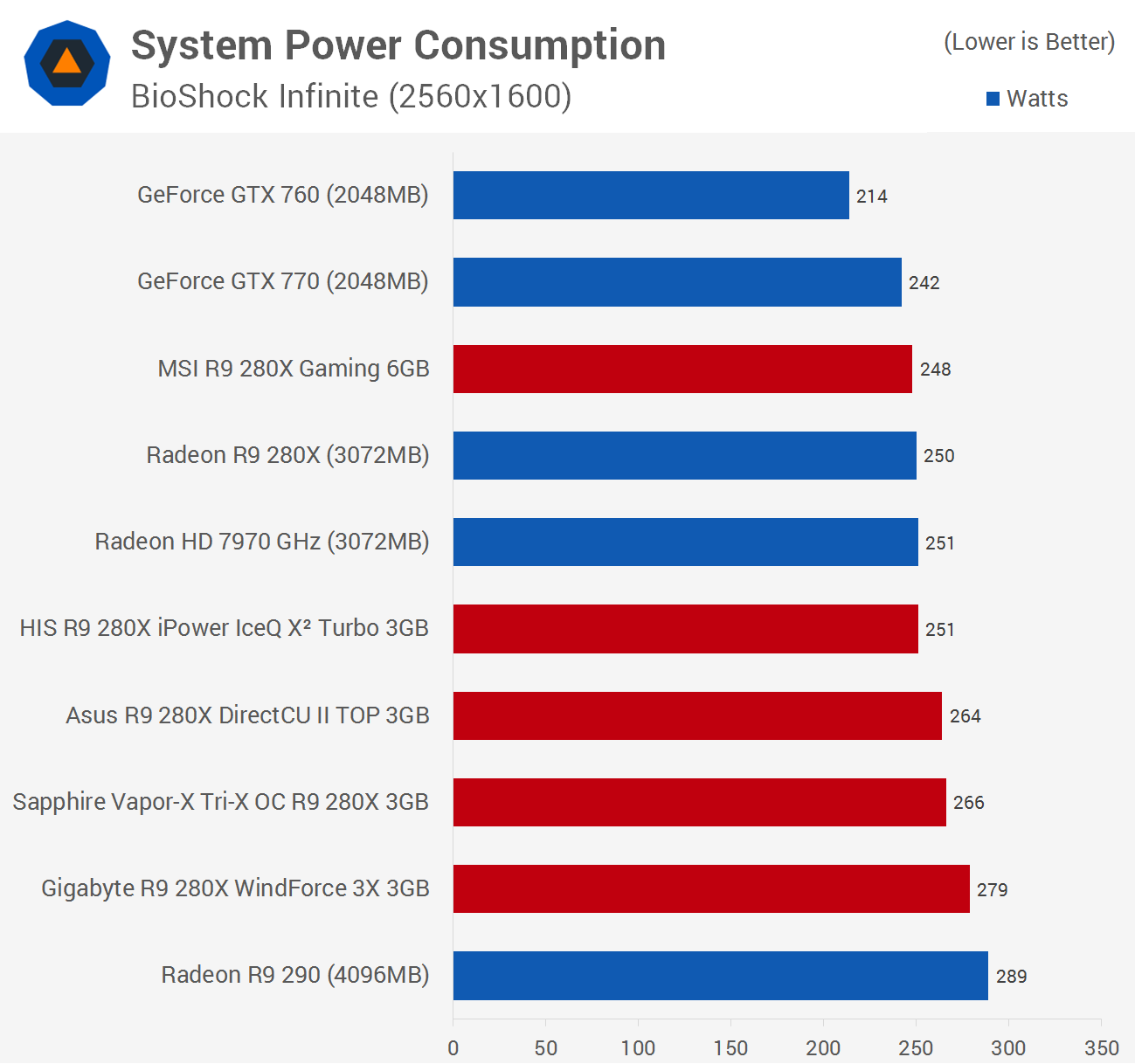
The MSI R9 280X Gaming and HIS R9 280X iPower IceQ X² Turbo consumed roughly the same amount of power as a standard R9 280X at 2560x1600 in BioShock Infinite while the Asus R9 280X DirectCU II TOP and Sapphire Vapor-X Tri-X OC R9 280X were around 6% more power hungry using up to 266 watts.
The most power hungry of the bunch was Gigabyte's R9 280X WindForce 3X OC, pulling a total system consumption of 279 watts, 11% more than if it were equipped with a standard R9 280X. That difference is due to Gigabyte's auto voltage feature.
To run at the factory overclock, the voltage is automatically increased above AMD's specification to help maintain stability. Even when overclocking the card ourselves we couldn't change the voltage. Thankfully, we didn't need to because the auto voltage feature works so well.
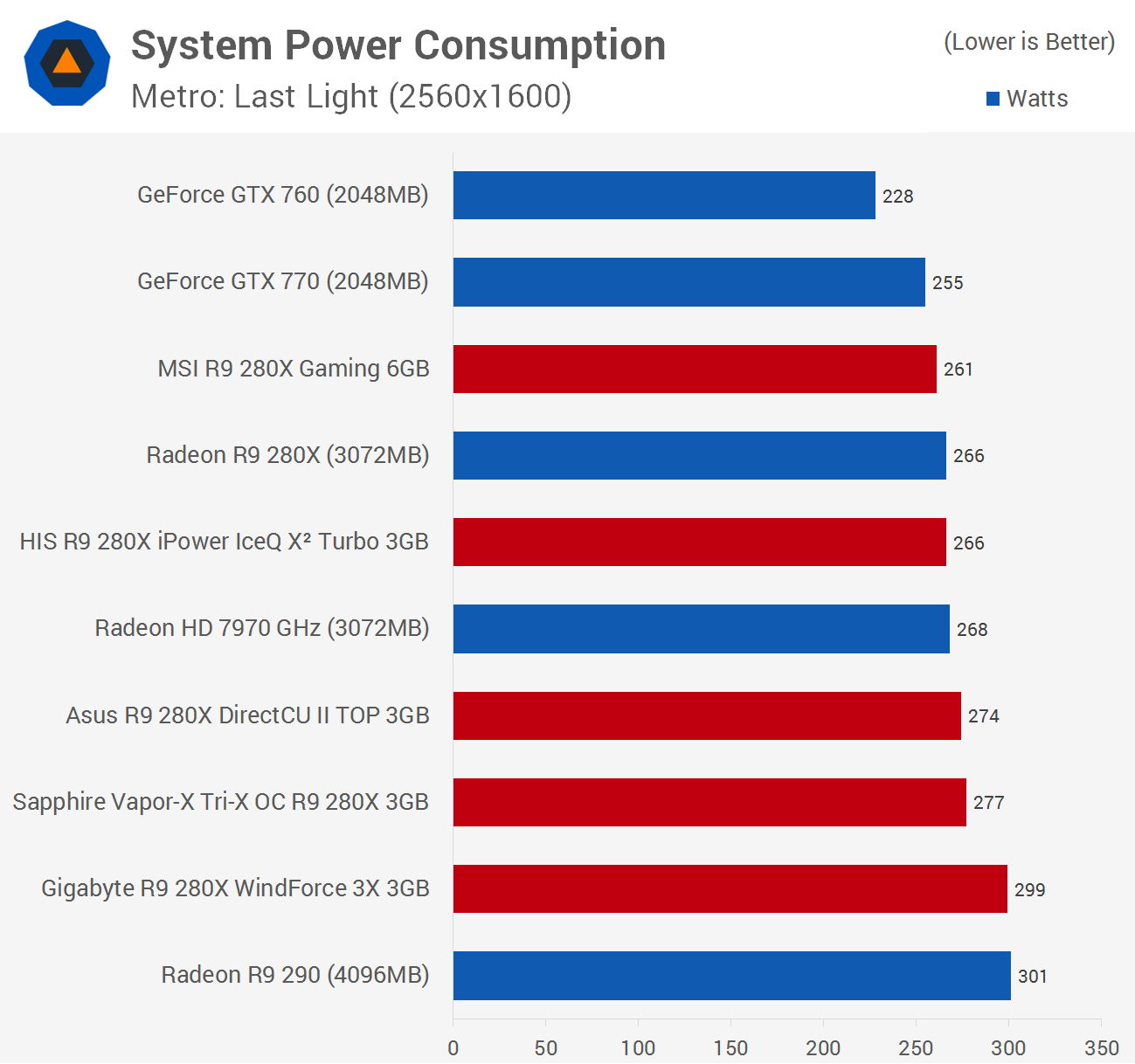
When under load, MSI and HIS' offerings again consumed roughly the same amount of power as the AMD reference R9 280X, Asus and Sapphire's consumed 4% more power and Gigabyte's used 12% more.
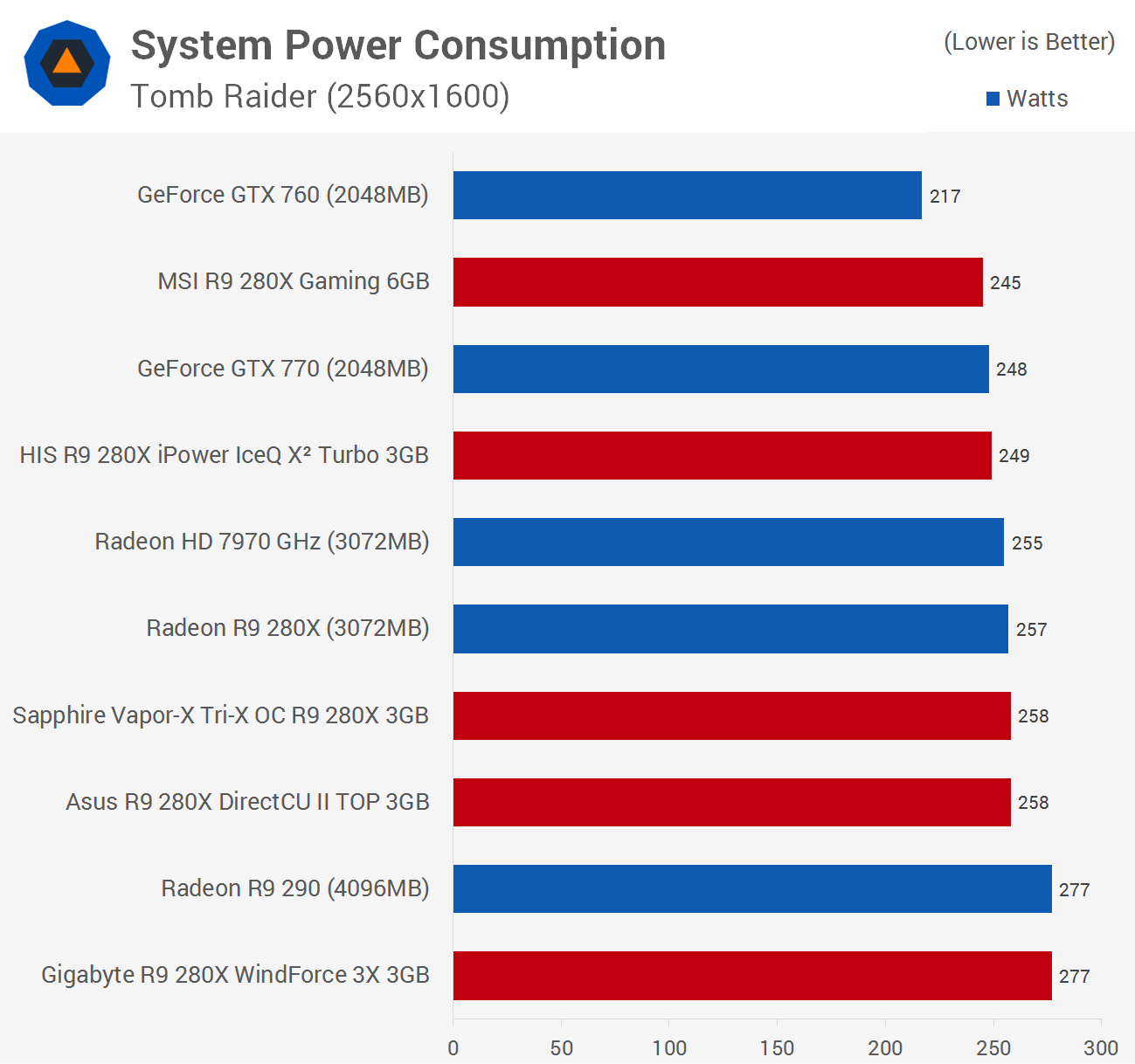
Finally, when testing system power consumption with Tomb Raider, MSI and HIS' cards drew less power than AMD's reference, Asus and Sapphire's contenders pulled just 1 watt more and Gigabyte's required 8% more power.
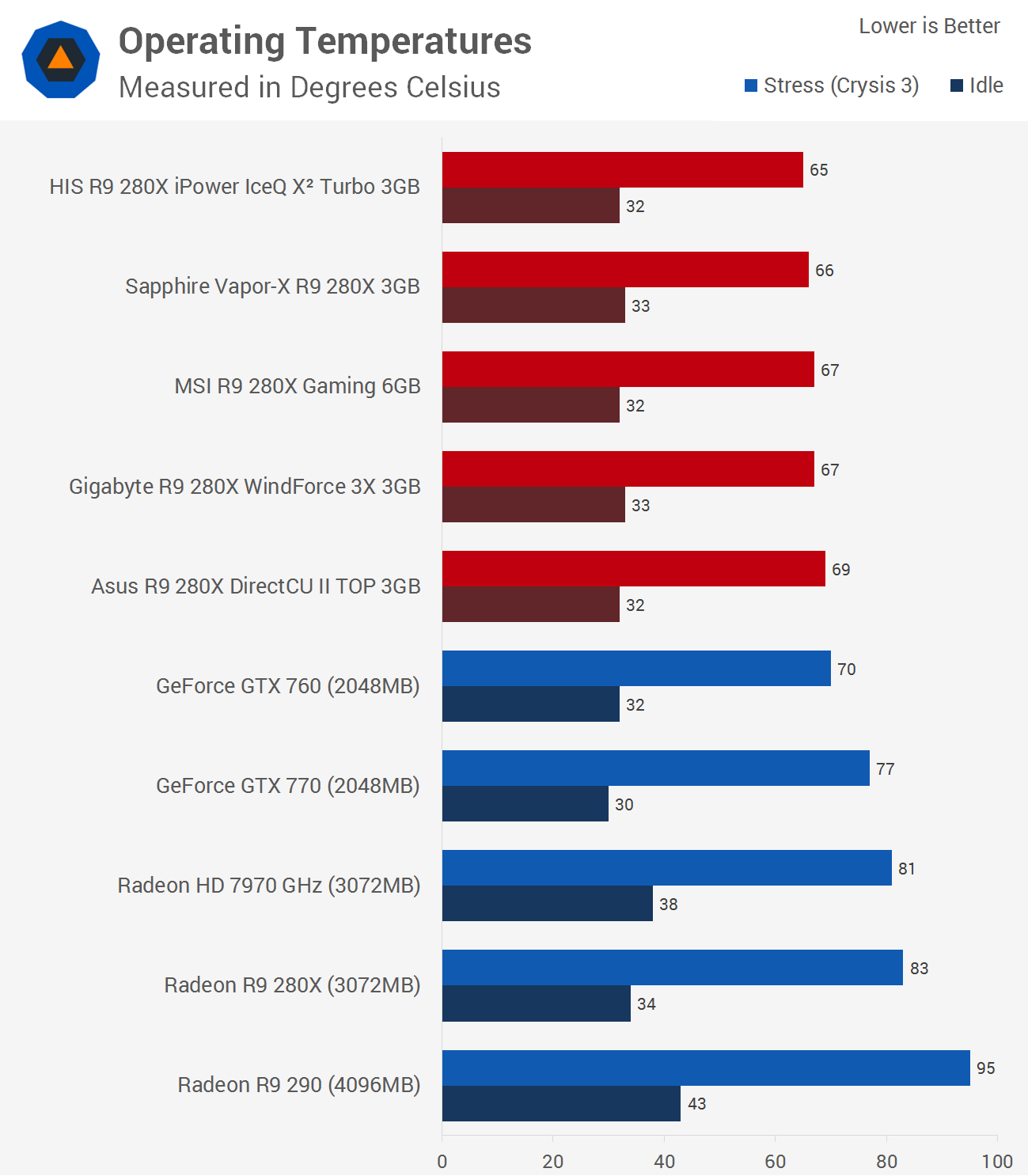
At idle, all five custom R9 280Xs ran at 32 to 33 degrees. The best performer was HIS' oversized iPower IceQ X² Turbo which sat at 65 degrees under load, though Sapphire's equally large Vapor-X Tri-X OC was just a single degree warmer at 66 degrees. The cards MSI and Gigabyte sent ran yet another degree hotter at 67 degrees while Asus' hit 69 degrees.
